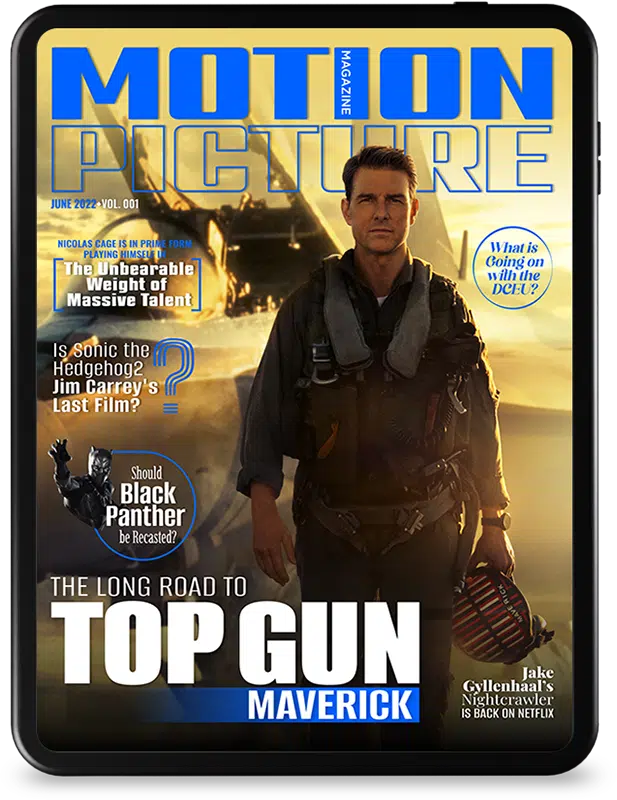The Narrative Genius of Screenwriter Sorkin NYT: Crafting the Hollywood Zeitgeist
In the pantheon of contemporary screenwriters, Aaron Sorkin emerges, front and center, as a veritable sorcerer of the script, his wand ever weaving through the zeitgeist of Hollywood cinema and television with staggering alacrity. Screenwriter Sorkin NYT isn’t just a moniker; it’s a testament to a man whose seismic impact on modern storytelling resonates with the resounding echo of unmistakable genius.
Diving headfirst into Sorkin’s world is akin to strapping into the slickest Audi Sports car, fuelled by the octane of his fast-paced, intellectually charged dialogue—a kinetic symphony that dances off actors’ tongues, compelling audiences to lean in, lest they miss a beat. His is a style so unique, it morphs mere conversation into a competitive sport, each line volleyed with the precision of a well-played chess move.
The West Wing’s Pilot: Defining the Political Drama Landscape
The pilot of “The West Wing” didn’t just hit the ground running—it sprinted towards reshaping television writing as we knew it. All right folks, picture this: It was a time when political dramas were largely confined to stuffy backrooms and dry policy talk. Then, bam! Sorkin drops this pilot where characters are not walking—they’re power walking through corridors, exchanging quips and exposition that somehow marry policy with humanity.
| Category | Details |
| Name | Aaron Sorkin |
| Occupation | Screenwriter, Playwright, Producer |
| Notable Works | A Few Good Men, The West Wing, The Social Network, Moneyball, Steve Jobs, Molly’s Game |
| NYT Related Articles | Interviews, reviews of works, opinion articles mentioning Sorkin |
| Crossword Connection | No direct connection known; Sorkin has not been known to write crosswords for NYT or others |
| Schrödinger Puzzle | Not related to Sorkin; published by NYT in 1996, predates Sorkin’s major fame |
| Awards | Academy Award for Best Adapted Screenplay (The Social Network), multiple Emmy and Golden Globe Awards |
| Recognitions by NYT | Inclusion in NYT Magazine articles, cultural commentary, and interviews |
| Known For | Sharp dialogue, complex characters, fast-paced “walk and talk” sequences |
| NYT Reviews | Generally favorable reviews for screenplays and television productions |
| Public Interaction | Letters to the Editor, public comments in response to articles mentioning Sorkin |
The Social Network’s Opening Scene: Reshaping Biopics
Let’s cut to the chase—like the first time you enter Space 220, the opening scene of “The Social Network” propels us into a new orbit of biopic storytelling. Mark Zuckerberg, as portrayed with a razor-sharp edge, sits across from his soon-to-be-ex-girlfriend, words whizzing by as if they’re on the autobahn.
Moneyball’s Innovations: A New Angle on Sports Stories
On the well-trodden field of sports cinema, “Moneyball” landed like a sucker punch, a story with a swing so unpredictable, it felt like watching Jonathan Brandis wield a bat with unexpected finesse. With Sorkin’s pen, the film shattered box office as deftly as it shattered sports clichés.
Steve Jobs’ Three-Act Structure: Redefining Biographical Narratives
Venturing into the orchard of Steve Jobs’ life, Sorkin decided to pick only three apples—yet what ripe, juicy story-fruits they turned out to be! Adopting a theatrical three-act structure, he pivots away from the biopic blueprint, crafting a character study with the precision of a master jeweler cutting diamonds.
A Few Good Men’s Courtroom Intensity: Amplifying Dramatic Tension
Remember the courtroom in “A Few Good Men”? You could slice the tension with a knife, the air charged as if a storm were about to break. In that pivotal moment, Lt. Kaffee dares Col. Jessep to reveal the truth, and the subsequent exchange is as furious as they come—words like bullets, zipping across the room with lethal aim.
To Kill a Mockingbird on Broadway: Adapting Classics for the Stage
“To Kill a Mockingbird” on Broadway—it’s as American as apple pie, yet Sorkin manages to lace this classic with a twist of something sharp and current. His adaptation isn’t a mere rehash; it’s a vibrant dialogue swaddled in the vintage fabric of a timeless story.
The Trial of the Chicago 7: Historical Dialogue in a Modern Context
Then there’s “The Trial of the Chicago 7.” This is Sorkin not just dipping his toes but diving into the historical pool, weaving a narrative so relevant that it’s akin to dropping the most famous Schrödinger puzzle into the present—absolute dynamite, reminiscent of the famed Election Day puzzle of 1996 that asked you to guess tomorrow’s headline news.
Conclusion: The Timeless Craft of Screenwriter Sorkin NYT
As we pull back to survey the landscape of Sorkin’s work, the map is clear: he has not just traveled through the territory of storytelling—he has expanded it. With his visionary moments in tow, screenwriter Sorkin NYT has carved out a canyon of narrative ingenuity.
From the sharp, zigzagging dialogue that redefined political dramas with “The West Wing,” to reshaping biopics with “The Social Network,” and making a court-martial the setting for some of the sharpest exchanges in film history in “A Few Good Men,” and even venturing into the theatrical realm, Sorkin’s footsteps reverberate across the halls of Hollywood and Broadway.
Shaping stories and minds, teaching us to listen faster, think sharper, feel deeper—Sorkin’s contributions to the craft are lessons in innovation. Whether one’s looking to My Adventures With Superman episode 4 watch online free or to mull over Reba The Voice performances, it’s this type of narrative currency that charges contemporary media, that electrifies an audience’s appetite for the profound, for the story well told. And in this vast, captivating world of narratives, Aaron Sorkin has proven himself not merely a screenwriter—but a storyteller for the ages, a modern maestro whose works are etched into the indelible canvas of cinematic history.
The Magic Behind the Screen: Unveiling Screenwriter Sorkin NYT’s Brilliance
Welcome to the space where the curtain is pulled back to reveal the master behind some of Hollywood’s most compelling stories. Aaron Sorkin isn’t just a name; he’s a narrative institution all by himself. As you cozy up to these snappy facts about the illustrious screenwriter Sorkin NYT, let’s dive into seven visionary moments that etched his signature onto the silver screen.
From A Few Good Men to The Trial of the Chicago 7
Back when Jack Nicholson was bellowing, “You can’t handle the truth!” who could’ve guessed that those iconic words sprung from Sorkin’s riveting pen? His career kicked off with a bang, but wait until you hear about the time he dramatized recent history in “The Trial of the Chicago 7.” Man, talk about a gripping portrayal of justice and disorder! Check out the details right about the Chicago 7 impact on legal dramas.(
The Wordsmith’s Toolbox: Walking and Talking
Ever noticed how Sorkin’s characters just can’t sit still? They’re always on the move, and it’s not just for the exercise. They call it the ‘walk and talk,’ a Sorkin staple. Whether it’s the polished hallways of “The West Wing” or the backstage mazes of “Studio 60,” this man sure knows how to make a conversation a scenic journey. Dive into his dynamic dialogue with a look at how his screenwriting stands out.(
The Fabled Newsroom: More Than Just Talk
It’s no secret – Sorkin has a soft spot for the news industry. “The Newsroom” wasn’t just a show; it was a love letter to journalism, packed with idealism and the kind of character dynamics that can only come from a Sorkin script. Boy, do those episodes spark the kind of debates that keep dinner parties going till midnight! See the snappy repartee for yourself and learn about his take on the news world.(
When Sorkin Takes on Tech: The Social Network and Steve Jobs
Hey, even Facebook’s origins got the Sorkin treatment in “The Social Network.” I mean, who else could turn computer coding and legal spats into such compelling drama? And don’t get me started on “Steve Jobs.” As if peeling back the curtain on the tech giant wasn’t enough, Sorkin had to go and make it a three-act structure tighter than your favorite pair of jeans. Witness the creative circuitry in Sorkin’s foray into tech biopics and see inside Jobs cinematic portrayal.(
Broadway’s Bright Lights Beckon
Oh, but our boy’s talents aren’t confined to the silver screen; Broadway’s also had a taste of Sorkin’s genius. Remember “To Kill a Mockingbird?” That wasn’t just your standard stage revival. No sir, Sorkin spun it with such freshness; Atticus Finch practically leapt into the 21st century. It’s worth catching more about Sorkin’s Broadway ventures here.(
Sorkin’s Sermons: A Lesson in Speechcraft
Let’s chinwag about Sorkin’s speechcraft for a sec. His characters deliver soliloquies that’d make Shakespeare blush. They’re not just monologues; they’re symphonies of words, crescendoing to revelations that hit harder than your morning espresso. Capisce? Now, go on and soak up some wisdom on writing compelling speeches.(
A Peep into the Sorkin School of Hard Knocks
Life ain’t all roses and red carpets, even for someone with Sorkin’s chops. The path’s had its pot-holes, but, oh boy, does adversity breed artistry or what? Learning about the hurdles he’s hopped is as gripping as any plot twist he’s penned. Peek into Sorkin’s moments of personal and professional trials.(
Well, folks, that about wraps up the trivia tour de force of screenwriter Sorkin NYT. From underdog stories to political ponderings, this man’s been the architect of many an on-screen odyssey. Ain’t it something, how words on a page can shape our world? Keep those peepers peeled for Sorkin’s next act—no doubt it’ll be a showstopper!
What is the hardest day of the NYT Crossword?
Hang onto your hats, trivia buffs, ’cause the hardest day of the NYT Crossword is like climbing Mount Everest on a Sunday! Yep, you heard me right. That’s when puzzle-heads face their Waterloo, ’cause the Times saves the most devilish brain teasers for the end of the week. The twists and turns in those clues are no joke!
What is scoring 100 on the nyt crossword clue?
Scoring 100 on the NYT crossword clue? Whoa there, cowboy! It’s not a high school exam! In the crossword world, there isn’t really a “score of 100.” But hey, if you’ve filled out the whole grid with nary a mistake, that’s as good as acing it in my book—take a bow!
How much does the New York Times pay for a crossword puzzle?
So you fancy yourself a wordsmith, huh? Well, crafting those clever little squares can net you a tidy sum. The New York Times pays between $300 to $450 for a daily puzzle and a grand for a Sunday stunner. Get those pencils sharpened and put on your thinking caps if you wanna see some green!
Who is the editor of The New York Times crossword puzzle?
At the helm of The New York Times crossword puzzle is none other than Will Shortz, the puzzle master extraordinaire. He’s been sorting out our crosswords and keeping our brains in tip-top shape since way back in 1993.
What is the easiest day of the NYT crossword?
After all the hair-pulling from the weekend’s puzzle shenanigans, Monday rolls around with the easiest day of the NYT crossword. It’s smooth sailing to start the week, so dive in and warm up those neurons with some comfy clues that’ll have you feeling like a genius in no time.
What is the easiest day of the week for the New York Times crossword?
In case you missed it the first time around, the easiest day of the week for the New York Times crossword is Monday. It’s like a gentle jog after running a marathon, and you’ll knock those clues out of the park faster than you can say ‘Eureka!’
What is the most used word in crossword puzzles?
‘ERA’ is the belle of the ball when it comes to crosswords. Fancy meeting you here—again! This most used word in crossword puzzles pops up more times than a jack-in-the-box, and let’s face it, it’s a nifty little helper when you’re stuck in a corner.
What is the hardest day for crossword puzzles?
The hardest day for crossword puzzles? Well, it’s déjà vu all over again, folks! Sunday’s the day where even the savviest word warriors get their mettle tested. The clues are twistier than a pretzel, and you’ll need to bring your A-game or go down with the ship!
What do circled letters in NYT Crossword mean?
Those circled letters in the NYT Crossword? They’re playing a secret game of hide-and-seek because they’re part of a nifty theme or a wordplay twist! Keep your eyes peeled—they’re the master key to cracking the puzzle wide open.
What is a rebus in the nyt?
A rebus in the NYT? It’s not just a pretty picture—it’s when you jam-pack more than one letter or a whole word into a single square. Mind bending, right? But, oh, when the penny drops, you’ll be grinning wider than a Cheshire cat.
How much does a crossword puzzle writer make?
Crossword puzzle writers, or wordsmiths that weave a web of crisscrossing challenges, can earn varying amounts. Some might just pocket chump change, while others rake in the big bucks, especially if they land a crossword in a prestigious publication. On average, they might snag a few hundred smackers per puzzle.
What do you call someone who makes crossword puzzles?
A person who crafts those maddeningly enjoyable crosswords? They’re the lords and ladies of lattices—cruciverbalists! They play with phrases like a cat with a ball of yarn, and leave us scratching our noodles but loving every minute!
How much does the nyt pay for a Sunday crossword puzzle?
That Sunday edition of the NYT crossword is no penny-ante stuff—it’s where the big fish swim! The New York Times hands over a cool $1,000 for puzzles that make the cut. So, for those with a flair for fiendish riddles, Sunday’s your payday!
Who is the famous crossword puzzle maker?
Merv Griffin once said he wanted his tombstone to read, “I will not be right back after this message.” And in the star-studded world of puzzles, who’s got the name in lights? Will Shortz, of course! With a mind sharper than a Ginsu knife, he reigns supreme in the land of wordplay.
Who wrote the mini crossword puzzles for The New York Times?
The bite-sized brain teasers known as the mini crossword puzzles for The New York Times come from the clever clogs of Joel Fagliano. Short and sweet, these minis are like the tapas of the crossword world—perfect for a quick nosh on words.
Is the nyt crossword hardest on sunday?
Is the NYT crossword hardest on Sunday? You bet your bifocals it is! Those Sunday puzzles come out swinging harder than a big league slugger, ready to knock puzzlers for a loop with their next-level brain-busters.
What is the order of difficulty in the NYT crossword?
When we talk order of difficulty in the NYT crossword, it’s like climbing a ladder. We start off easy-peasy with Monday, and by the time we hit Thursday, things get tricksier with tricks and twists. Friday and Saturday take no prisoners with the toughest nuts to crack, and Sunday—it’s the grand finale with the largest, most challenging puzzle of them all.
Why is The New York Times crossword so hard?
Why is The New York Times crossword so hard? Ah, the million-dollar question! Those word wizards at the Times like to keep us on our toes, with Thursday’s puzzles throwing curveballs our way and the weekend ones turning the dial up to eleven on brain gymnastics. They’re not just puzzles; they’re an endurance sport for the mind!
Which newspaper has the hardest crossword puzzle?
If crossword puzzles had a heavyweight champ, The Times might just take the belt, but for cryptic clue aficionados, The Guardian or The Times of London might roll out the most fiendish ones across the pond. It’s a global battle of wits, folks!




























